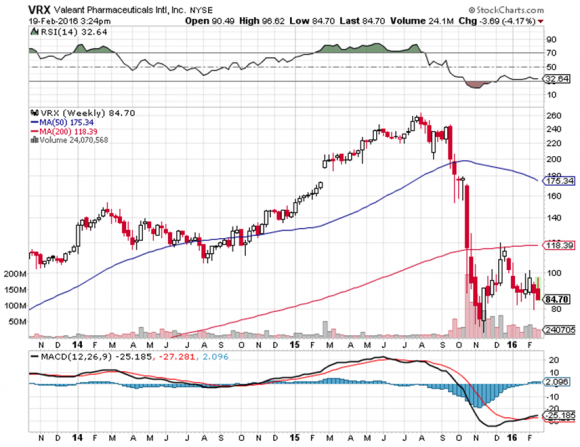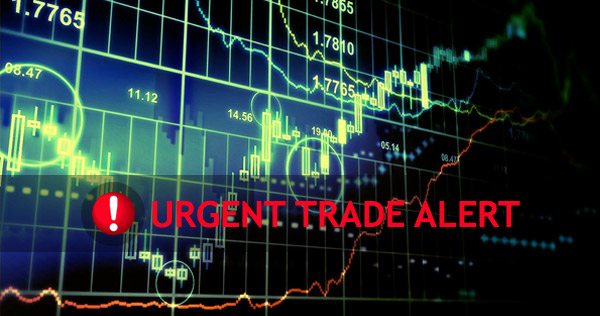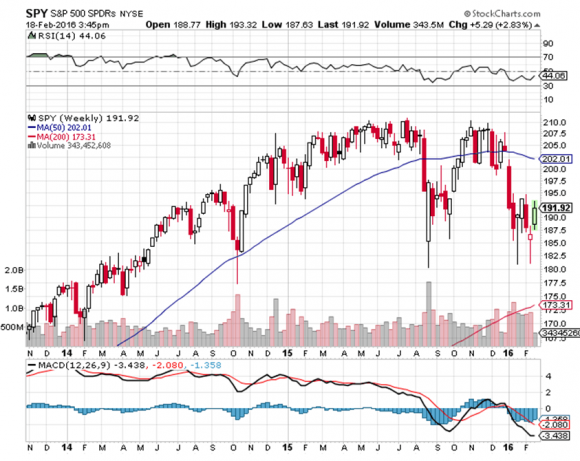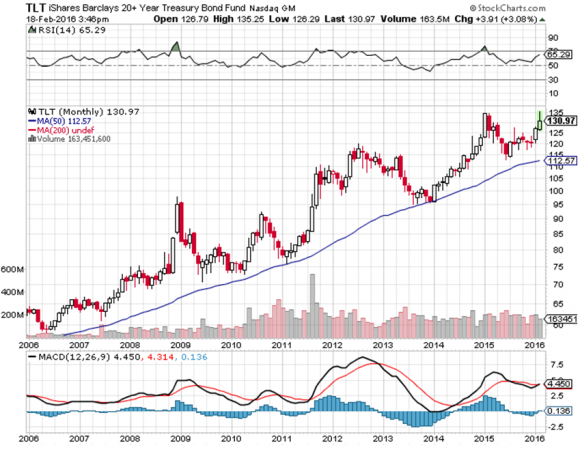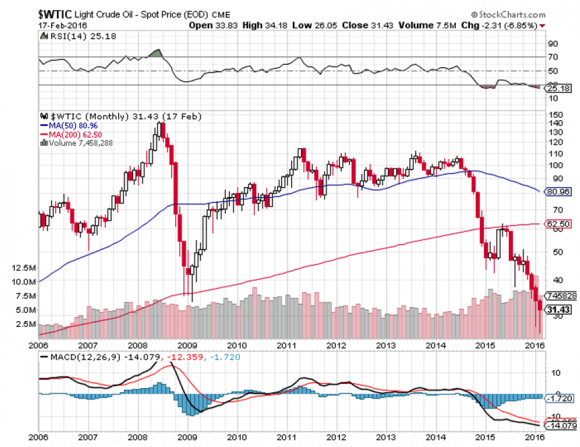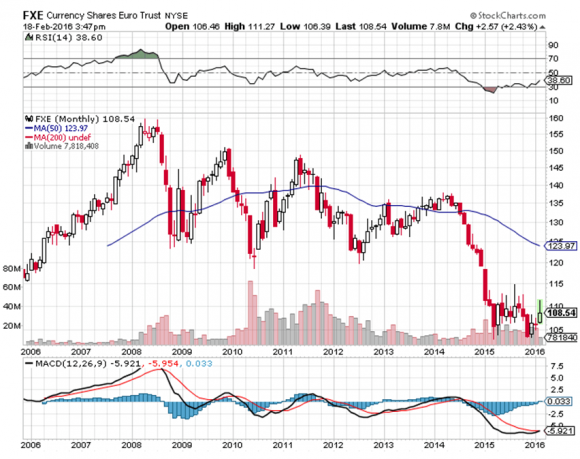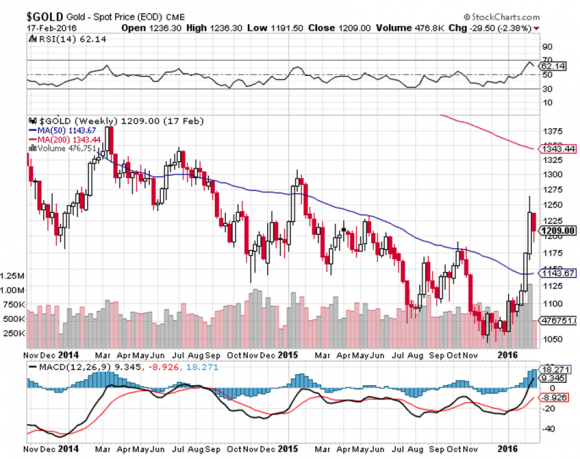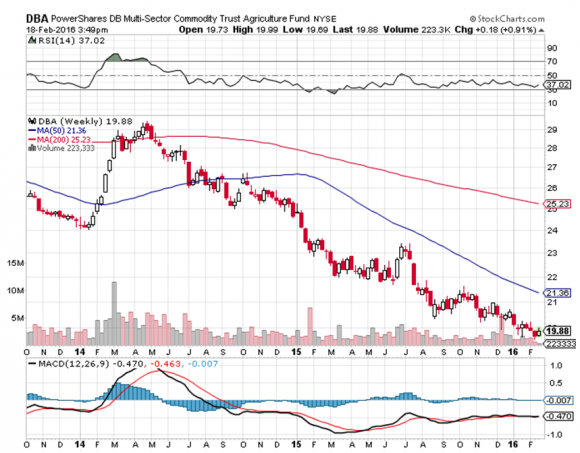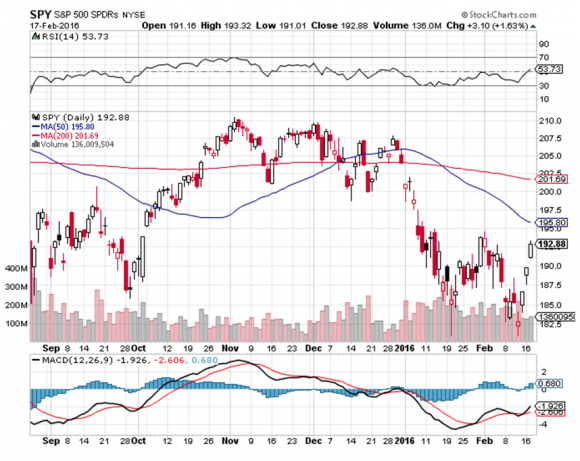While the Diary of a Mad Hedge Fund Trader focuses on investment over a one week to six-month time frame, Mad Day Trader, provided by Bill Davis, will exploit money-making opportunities over a brief ten minute to three day window. It is ideally suited for day traders, but can also be used by long-term investors to improve market timing for entry and exit points. Read more
Global Market Comments
February 22, 2016
Fiat Lux
Featured Trade:
(HOW LOW WILL BIOTECH GO?),
(IBB), (GILD), (CELG), (VRX),
(TESTIMONIAL)
Gilead Sciences Inc. (GILD)
iShares Nasdaq Biotechnology (IBB)
Celgene Corporation (CELG)
Valeant Pharmaceuticals International, Inc. (VRX)
Long-term readers of this letter prospered mightily from my addiction to biotech stocks, one of the top performing sectors in the stock market during the first half of last year.
Readers made three round trips in hepatitis C drug developer Gilead Sciences (GILD) in the past four months, adding 5.77% to the value of their portfolios. I believe the company?s blockbuster drug will become the most profitable in history. So do a lot of others.
Longer-term investors bought the Biotech iShares ETF (IBB) on my advice, which gained an impressive 45% last year.
They certainly were getting downright frothy by June.
No less a figure than Federal Reserve governor Janet Yellen has indicated then that she thought valuations in the biotech sector were getting ?substantially stretched.? The Fed doesn?t single out stocks for commentary very often.
?Sell in May and go away,? turned out to be a brilliant strategy in 2015 because it got out of these stocks at all time highs with huge profits.
It was after that when the rot began.
It started when presidential candidate, Hillary Clinton, sent out the Tweet that sank biotech, warning that price controls and international drug competitions would be a high priority in her administration.
Then the bad boy antics of Martin Shkreli were exposed, who raised the price of an AIDS drug, Daraprim overnight by 55 fold. Nothing like focusing a spotlight on a big open sore. Shkreli is now under Federal indictment for operating a Ponzi scheme.
Then Valient (VRX), a target of activist Bill Ackamn, imploded.
The industry has barely had an up day since then.
My favorite, Gilead Sciences suffered a 33% nosedive, while the Biotech IShares ETF (IBB) sank by a gut churning 40%. Favorite Celgene (CELG) gave back 34%.
Is biotech gone for good? Is this once loved sector headed for the dustbin of history to join coal and 3-D printing?
I don?t think so. Far from the truth.
Big institutional investors and hedge funds that had the wisdom to raise cash at the end of 2015 are starting to circle in on this faded beauty, making lists, and taking names. And (GILD), the (IBB), and (CELG) are at the top of those lists. (VRX) isn?t.
Biotech has always been a hedge fund favorite.
That means hot money regularly flows in and out, giving the sector more than double the volatility of the main market. A 10% correction in any other stock is worth at least 25% in biotech. Now is one of the ?out? times.
This also makes biotech stocks great ones to buy on a dip. My last foray into (GILD) occurred after cautious guidance took the shares down a heart stopping 10% in a single day.
This is a great example of how unusually sensitive biotech stocks are to headline risk. I?ve ridden stocks to tremendous heights, watching them pour billions into a single treatment, only to see them crash and burn on failed stage three trials.
That is just the nature of their business. It?s all about ?all or nothing bets.?
Biotech is a high-risk sector that should only be held within a well diversified portfolio. You may notice that in the Mad Hedge Fund Trader?s model trading portfolio I never have more than 10% in biotech at any given time. I figure I could handle a total blow up and lose the whole 10% and still stay in business.
When I speak at conferences, strategy luncheons, and on TV, I tell listeners of my lazy man?s guide to long-term investment. Only follow three sectors, technology, biotech, and cyber security, and ignore the other 97. You?ll save yourself a lot of time reading pointless research.
Biotech currently accounts for a mere 1% of US GDP. It is on its way to 20%, about where big technology is today. That means that a disproportionately large share of earnings growth will spring from biotech over the coming decades.
One way to protect yourself is to stick with the big caps, which are undervalued relative to the sector as a while, and are expected to haul in 20% earnings growth this year.
Many smaller companies are at prices assuming a total certainty of the success of a single drug. The reality is that this only happens about half the time.
If you do go with small caps, I would take a venture capital approach. Buy a dozen with the expectation that many will go under, a coupled do OK, and one goes through the roof. Never put all your eggs in one basket. Or just buy the (IBB) which does this neat trick for you.
It also helps that you have someone with a scientific background making your picks, like myself.
Because drug companies promise such amazing results, like curing cancer, the sector has always been prone to hype and over promotion. I never met a biotech CEO who didn?t believe his company was about to deliver the next panacea, taking his shares up 100-fold, and delivering him a Nobel Prize.
One plus for biotech is that it has unusually strong patent protection, which usually extends out 20 years for new products. There are not a lot of Chinese companies that can imitate their drugs.
That means earnings can be predicted far into the future, and are largely immune from the economic cycle. If you?re sick, you want to get cured, regardless of whether the GDP is growing or shrinking, or whether interest rates are low or high.
And much of this cost is borne by the US government, through Obamacare and Medicare.
Make sure that your investments have plenty of new developments in the pipeline. Expiring patents on past winners with no replacements can spell certain death for a stock price.
I tell my kids that they will never suffer my medical maladies, as everything important will be cured within 20 years.
A century from now, historians will look back on our era and think ?Those poor people. They were so ignorant and helpless. They new nothing about medicine.? Our most modern treatments will appear to them like the application of leaches.
Publicly listed drug companies are now venturing into research fields that were only science fiction when I was in the lab 45 years go. ?Gene editing,? whereby genes can be repaired, edited, and then turned on and off at will, is now becoming a burgeoning new science.
It promises to cure the whole range of human maladies, including heart disease, cancer, obesity, and a whole range of degenerative diseases (including some of mine).
Expect to hear a lot more about TALENs (transcription activator-like effector nucleases) and CRISPR (clustered regular interspaced short palindromic repeats). You heard it here first.
What is truly fascinating is that hybrid computer science/biochemical scientists are now taking algorithms developed by the National Security Agency hackers and using them to decode human DNA. (I hope I?m not speaking too much out of school here).
Gene editing is the natural outcome of the discovery of recombinant DNA technology developed during the 1970?s by Paul Berg, Herbert Boyer, and Stanley Cohen, all early heroes of mine.
Since none were the equity participants of private companies, the initial rewards for the breakthrough were minimal. I remember that one received a new surfboard for his efforts.
Berg went on to found Genentech (GENE) in 1977 and got rich. If I hadn?t gone into the stock market, that is almost certainly where I would have ended up.
How things have changed.
The short answer here is that biotech does have further to run. A lot further.
The rate of innovation of biotechnology is accelerating so fast that it will continue to spew out fantastic investment opportunities for the rest of our lives.
So expect to receive many more Trade Alerts
in this area in the years to come.
But it is definitely an ?E? ticket ride. So fasten your seatbelt on your path to riches.
As for me, I am thrilled that I got to live so long to see his stuff happen. At times, it was a close run race.
 This One Looks Like a Winner
This One Looks Like a Winner
As a potentially profitable opportunity presents itself, John will send you an alert with specific trade information as to what should be bought, when to buy it, and at what price. This is your chance to ?look over? John Thomas? shoulder as he gives you unparalleled insight on major world financial trends BEFORE they happen. Read more
While the Diary of a Mad Hedge Fund Trader focuses on investment over a one week to six-month time frame, Mad Day Trader, provided by Bill Davis, will exploit money-making opportunities over a brief ten minute to three day window. It is ideally suited for day traders, but can also be used by long-term investors to improve market timing for entry and exit points. Read more
While the Diary of a Mad Hedge Fund Trader focuses on investment over a one week to six-month time frame, Mad Day Trader, provided by Bill Davis, will exploit money-making opportunities over a brief ten minute to three day window. It is ideally suited for day traders, but can also be used by long-term investors to improve market timing for entry and exit points. Read more
Global Market Comments
February 19, 2016
Fiat Lux
Featured Trade:
(HOW THE REST OF 2016 WILL PLAY OUT),
(SPY), (AAPL), (PANW), (BAC), (GILD),
(TLT), (TBT), (HYG), (AMLP),
(FXE), (FXA), (FXC), (CYB),
(FCX), (GLD), (SLV), (ITB)
(A NOTE ON THE MARCH OPTIONS EXPIRATIONS)
SPDR S&P 500 ETF (SPY)
Apple Inc. (AAPL)
Palo Alto Networks, Inc. (PANW)
Bank of America Corporation (BAC)
Gilead Sciences Inc. (GILD)
iShares 20+ Year Treasury Bond (TLT)
ProShares UltraShort 20+ Year Treasury (TBT)
iShares iBoxx $ High Yield Corporate Bd (HYG)
Alerian MLP ETF (AMLP)
CurrencyShares Euro ETF (FXE)
CurrencyShares Australian Dollar ETF (FXA)
CurrencyShares Canadian Dollar ETF (FXC)
WisdomTree Chinese Yuan Strategy ETF (CYB)
Freeport-McMoRan Inc. (FCX)
SPDR Gold Shares (GLD)
iShares Silver Trust (SLV)
iShares US Home Construction (ITB)
Traders and investors can be excused for being confused, befuddled, and clueless about the future direction of all asset classes after the trading violence of the first six weeks of 2016.
$500 points down!
$400 points up!
Ten year Treasury bond yields at 1.55%!
Negative interest rates in Japan!
Oil hits $26!
HELP!
Professional Investment Advisors have seen their phones ring off their hooks, with no clear answers to give nervous clients.
As for me, the future direction of every asset class for the balance of 2016 is as clear as the view from my mountaintop aerie today. I can even see both the distant Farallon Islands and the snow covered High Sierras without a telescope from where I sit.
I?ve seen all this before.
Every decade or so, we get a year like this one.
In 1962, the Cuban Missile Crisis promised to bring us nuclear Armageddon.
I remember 1968 like it was yesterday. The Vietnam War was in full swing, and we were losing 2,000 men a month. My turn was coming up.
Martin Luther King was assassinated in Memphis, and Robert Kennedy was shot the night he won the California Democratic presidential primary.
1974 gave us Watergate, the US government cut its last ties with the gold standard, and the barbarous relic soared.
That led to free floating exchange rates, the money-making opportunity of the century. We all became experts in anything foreign very quickly.
Then came 1979.
We were subjected to the prolonged torture of the Iran Hostage Crisis, when more than 60 staff from our Tehran embassy were held for 444 days. The US economy was in a deep, long-term funk. The world thought we had become weak.? Post Vietnam American military strength reached a nadir.
No one in the industry will forget the 1987 crash. Note: after a one-day 20% fall, stocks resumed a bull market that lasted 13 more years. Take that as a hint for the future.
I?ll never forget 1998, when Russia defaulted on its debt, and Long Term Capital Management went bust. The Volatility Index (VIX) rocketed to $42, and stayed there forever. The first funds shorting technology stocks started going under.
I don?t need to remind you of 2008, as most of you were around. My readers and I made a fortune then on the short side. But for most traders and investors the scars still run deep.
And now it is 2016!
You already know what has happened so far since the stork brought in the New Year. So I?ll focus on an asset class by asset class breakdown of what?s coming next.
Stocks: We have just defined the trading range for the next six months. After breaking down from $202, we plunged to the $1,812 Overture low on February 11. I remember sitting in my Incline Village home watching my screens thinking ?This is the low for the year.?
From here we will see a succession of lower highs and higher lows, creating a giant triangle formation on the charts. Watch out for false breakouts and breakdowns along the way engineered by high frequency traders.
Then institutional investors will return from their summer vacations, realize that stocks boast a PE multiple of 15 times and pay a 2%-3% dividend in a NIRP (negative interest rate policy) world. They put on their buying boots and break the market out to a new all time high by year end, but not by much.
Buy the sectors that will lead, especially banks (BAC), technology (AAPL), and biotech (GILD).
Bonds: The double top is in, as is screamingly obvious from the long term chart below. Japan?s move to NIRP, and the negative yield on the ten year there gave us our final capitulation top in prices and low in yields at 1.55%.
Double digit yielding junk bonds (HYG), energy MLP?s (AMLP), and emerging market bonds (ELD) offer the best value in a decade. Buy the (TBT).
Foreign Exchange: Without any further Fed interest rate rises this year, the dollar will roll over and fall asleep. It won?t crash, it will just go dormant. Currencies will gain (FXE), (FXA), (FXC), but not by much. Hedge fund dreams of a collapse in the Chinese Yuan (CYB) will be shattered. It will be a low volatility year for currencies from here.
Energy: The bottom is in for oil, but expect multiple tests of the $26 a barrel level before anyone believes it. High frequency traders may even give us a momentary false breakdown to $24.
That means there is a potential 70% move up in the cards to my $44 target. Volatility will reign supreme. Now that the Saudis, Russians, and Iranians are talking, it could still take years for demand to catch up with supply.
Think China.
Commodities: The bottom is close, if not behind us. Copper is obviously putting in a head and shoulders bottom on the charts, as are iron ore, zinc, and even some grains. When it?s cheaper to buy commodities on the floor of the New York Stock Exchange than in mines and pits, it is time to buy their shares.
Precious Metals: The bottom is in here too. Assets emerging from five-year bear markets don?t have much downside risk, a newly popular concept. Gold also does tremendously well in a NIRP world, as there is no opportunity cost for holding the yellow metal.
Agriculture: Avoid. Not even El Nino can help this despised asset class. After all, they grow like weeds. Avoid.
Real Estate: The last bull market lives, thanks to interest rates lower than anyone imagined possible. The 30-year fixed rate conventional mortgage at 3.50%? And now a two decade long demographic tailwind is about to kick in.
Calling all Millennials! Go forth and multiply!
There, I?ve made it easy for you. Thank you for your support.
Adjust your portfolios accordingly.
 There, I?ve Made It Easy for You
There, I?ve Made It Easy for You
We have the February options expiration today and have the good fortune to see two positions in our model trading portfolio expire at their maximum potential profit point.
Those who held on through the dog days last week will be richly rewarded. Good job, and on to the next trade. You are one of the fortunate few who are up on the year.
Those include the:
(SPY) February $173-$178 deep in-the-money vertical bull call spread
(up +10.62%)
(SPY) February $176-$181 deep in-the-money vertical bull call spread
(up +9.56%)
We also have a March options position that is deep in the money and expires in 25 trading days, and I just want to explain to the newbies how to best maximize their profits here as well.
This comprises:
The S&P 500 (SPY) March $170-$175 deep in-the-money vertical bull call spread with a cost of $3.95.
As long as the (SPY) closes at or above $175.00 on Friday, March 18, the position will expire worth $5.00 and you will achieve the maximum possible profit.
This will work out to a 26.58% gain in seven weeks, not too shabby in these peripatetic times. Better that a poke in the eye with a sharp stick, as they say.
In this case, the expiration process is very simple. You take your left hand, grab your right wrist, pull it behind your neck and pat yourself on the back for a job well done.
Your broker (are they still called that?) will automatically use the long call to cover the short call, cancelling out the positions. The profit will be credited to your account on the following Monday, and the margin freed up.
Of course, I am watching these positions like a hawk, as always. If an unforeseen event causes the (SPY) to crash once again, such as if Janet Yellen suddenly, and shockingly, raising interest rates, you should get the Trade Alert in seconds.
If the (SPY) expires slightly out-of-the-money, like at $174.90, then the situation may be more complicated, and can become a headache.
On the close, your short call position expires worthless, but your long call position is converted into a large, leveraged outright naked long position in the (SPY) shares with a net cost of $173.95.
This position you do not want on pain of death, as the potential risk is huge and unlimited, and your broker probably would not allow it unless you put up a ton of new margin.
This is not what moneymaking and risk control is all about.
Professionals caught in this circumstance then sell short a number of shares of (SPY) on expiration day right at the close equal to the long position they inherit with the expiring $170 call to hedge out their risk.
Then the long (SPY) position is cancelled out by the short (SPY) position, and on Monday both disappear from your statement. However, this can be dicey to execute going into the close and requires a level of expertise most of you don?t have.
So for individuals, I would recommend just selling the March (SPY) $170-$175 call spread outright in the market if it looks like this situation may develop and the (SPY) is going to close very close to the $175 strike.
Keep in mind, also, that the liquidity in the options market disappears, and the spreads widen, when a security has only hours, or minutes until expiration. This is known in the trade as the ?expiration risk.?
One way or the other, I?m sure you?ll do OK, as long as I am looking over your shoulder, as I will be.
As of this writing, this position looks pretty safe as it is a full 18 points in the money. But a lot can happen in 26 days.
Well done, and on to the next trade.
 Well Done and On to the Next Trade
Well Done and On to the Next Trade
Legal Disclaimer
There is a very high degree of risk involved in trading. Past results are not indicative of future returns. MadHedgeFundTrader.com and all individuals affiliated with this site assume no responsibilities for your trading and investment results. The indicators, strategies, columns, articles and all other features are for educational purposes only and should not be construed as investment advice. Information for futures trading observations are obtained from sources believed to be reliable, but we do not warrant its completeness or accuracy, or warrant any results from the use of the information. Your use of the trading observations is entirely at your own risk and it is your sole responsibility to evaluate the accuracy, completeness and usefulness of the information. You must assess the risk of any trade with your broker and make your own independent decisions regarding any securities mentioned herein. Affiliates of MadHedgeFundTrader.com may have a position or effect transactions in the securities described herein (or options thereon) and/or otherwise employ trading strategies that may be consistent or inconsistent with the provided strategies.




